By Andrew Carlson, a student at the University of Minnesota Carlson School of Management majoring in finance and history
Pronouncing the resumption of long-term growth in emerging markets (“EM”) bolstered by more structurally robust political economies, Jan Dehn, Global Head of Research at Ashmore, spoke to CFA Society Minnesota on October 31, 2017 over an investment climate he finds favorable to EM. Succinctly, his thesis leverages pro-growth dynamics in EM, from both economic and financial perspectives, in the midst of fading developed market QE trades to argue for allocation shift to the class.
Dehn has a wealth of experience in emerging markets, having served the Ashmore Group, a British fund manager, in research and strategic roles since 2005 and with previous EM background at Credit Suisse and the World Bank.
Core Thesis
Convergence, the principle of emerging market economies realizing their development potential after the Cold War, appeared fantastical as the Asian and Russian financial crises of the late ‘90s portended a volatile road to growth. The principle resided on a dearth of capital in emerging markets that, when mixed with the underfinancing of labor, would yield higher ROIC, but institutional investors instead took the EM trade as a proxy for risk-on/risk-off, selling the asset class wholesale even in unrelated crises.
Interestingly, the trade may be have returned. Since the ’98 Russia crisis, all +10bps VIX spikes came from developed market sources, while structural shifts in the EM economies made many less dependent on fickle commodity revenue with negative feedback loops involving currency depreciation and foreign divestment. Practically, as Dehn, notes, a roughly $100T fixed income market with only $20T being EM-issued does not match the 60% of global GDP yielded by emerging markets. Furthermore, the development of domestic pension funds smoothens potential fx crises and puts a floor to the risk-off trading behavior of the past.
Expectation
QE trades (longing USD, USD equities, German sovereigns) bet on the buying power of developed market central banks, distorting a global economy that now must slowly reallocate capital to the EM private sector where meaningful growth can be expected. Concurrently, fears of Chinese crises engulfing emerging market bonds may be overblown as the fundamental data demonstrates a greater importance of intra-EM trade for these sovereigns with China having a much more prosperous connection/tether to developed markets.
Summary
Ashmore lists a few key takeaways to understand the thesis and some possible iterations of the trade
- “A longer-term EM recovery is now underway based on value, fundamental, and light positioning”
- “Positioning in EM assets remains extremely light”
- “Strong EM fixed income value proposition”
- “EM equities – a structural growth play still priced as a cyclical story”
- “EM currencies have significant upside after 5 years of decline”
- “EM growth premium is back”
- “EM is a safer bet as populism engulfs Developed Markets”





